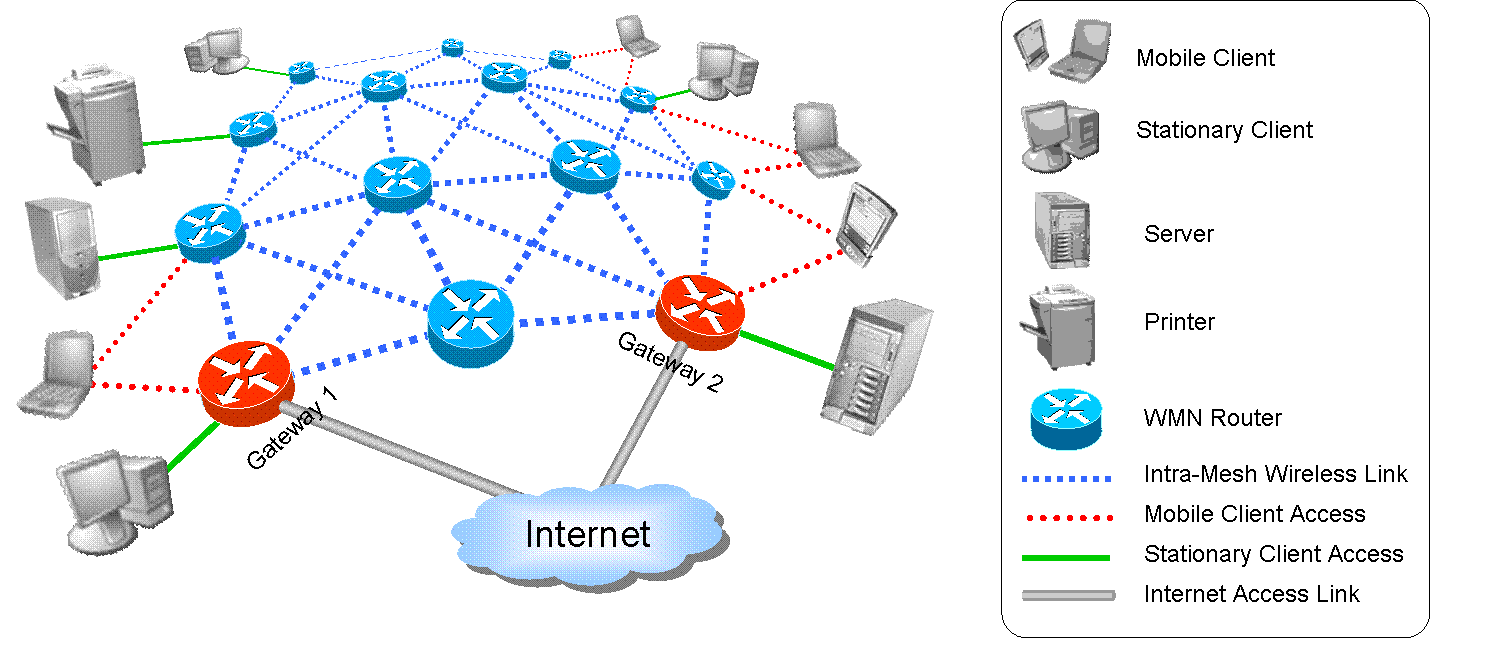
In its most general form (see the figure), a wireless mesh network (WMN) interconnects stationary and/or mobile clients and optionally provides access to the Internet. The defining characteristic of a WMN is that the nodes at the core of the network are forwarding the data to and from the clients in a multihop fashion, thus forming a (mobile) ad hoc network (MANET).
Beyond the multihop requirement, there are no other restrictions on the design of a WMN resulting in an unprecedented flexibility and versatility. It is this versatility that allowed many players to enter the mesh networking arena with different products and applications. For example, the Internet access link in the figure can be wired (e.g., T1, Ethernet, etc.), wireless (point to point or point to multipoint) or be absent altogether.
Some WMN technologies are designed for high speed mobility (100mph), others for casual roaming in a building, while others are only meant to be used by stationary clients The wireless links used to connect the mobile clients can be of the same type as the intra-mesh wireless links or can be a completely different technology.